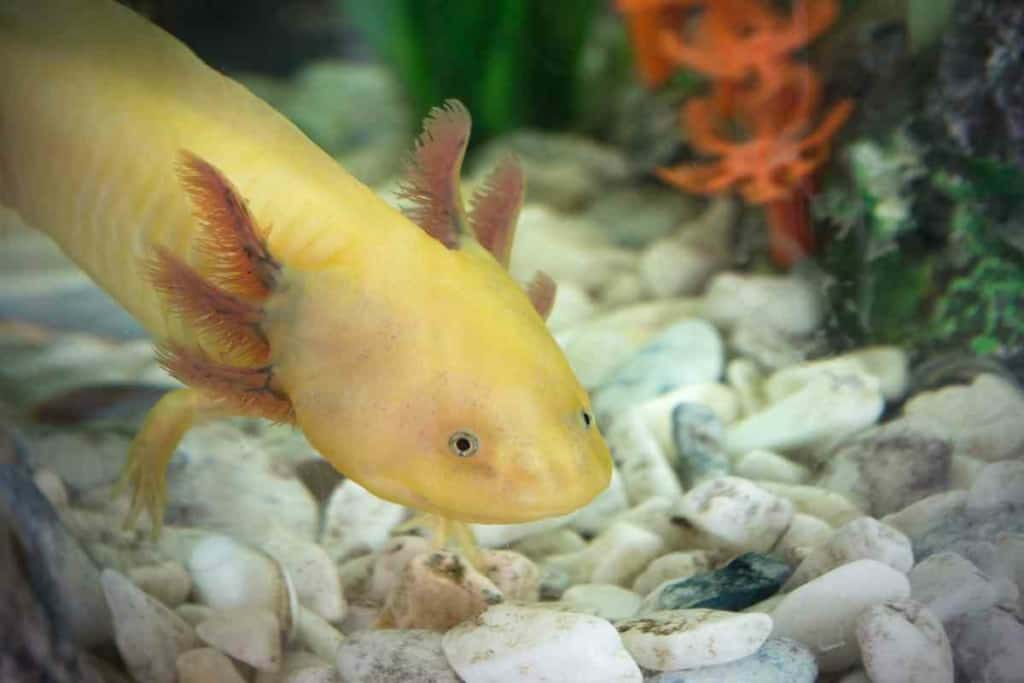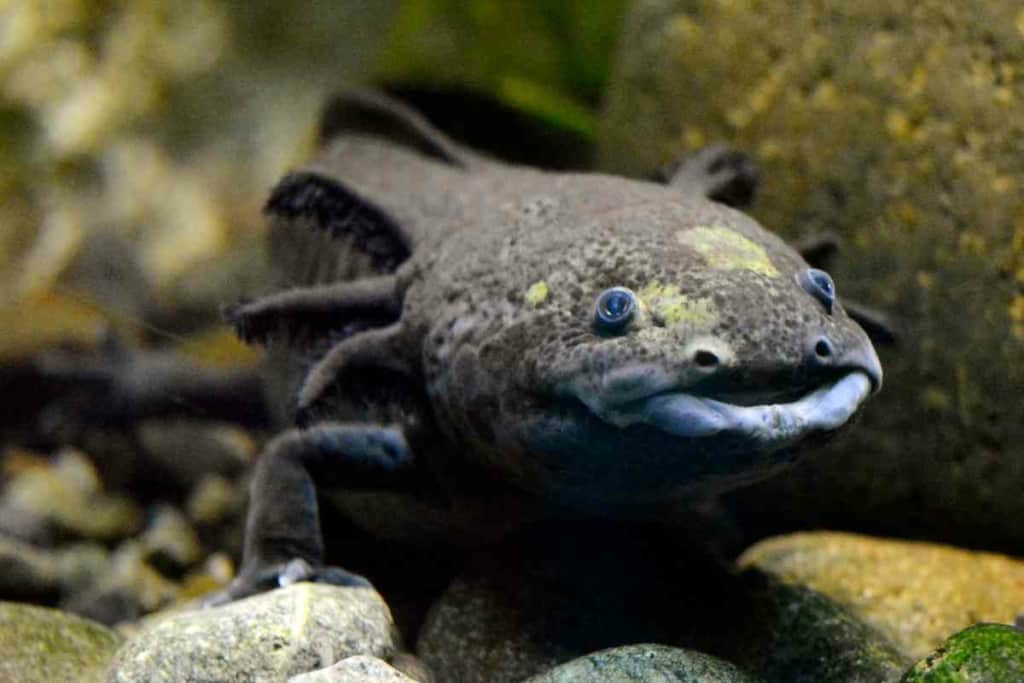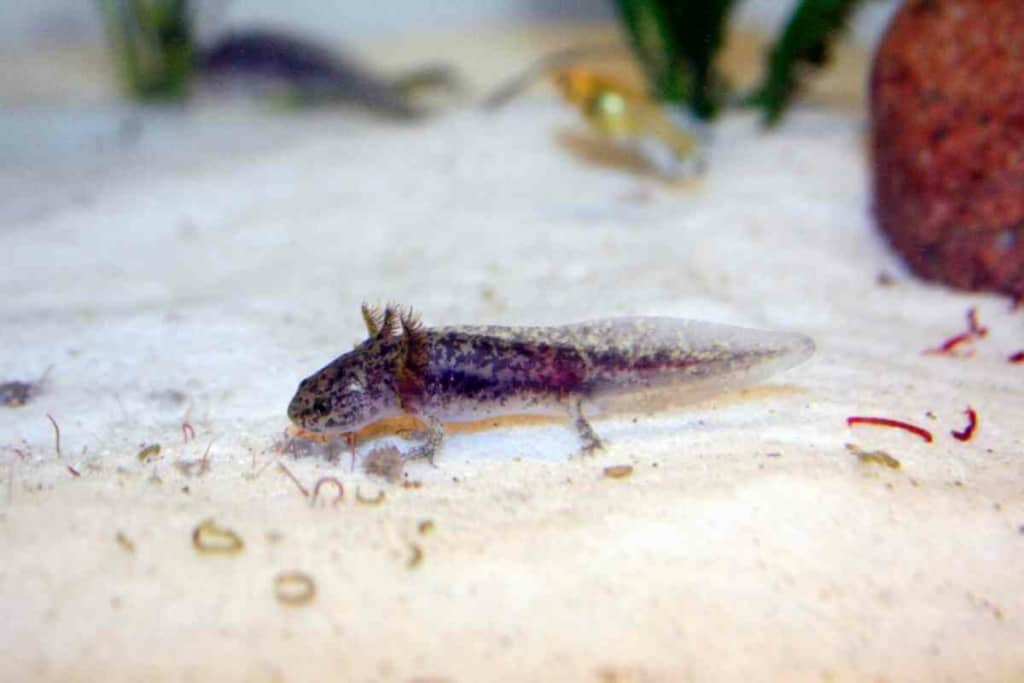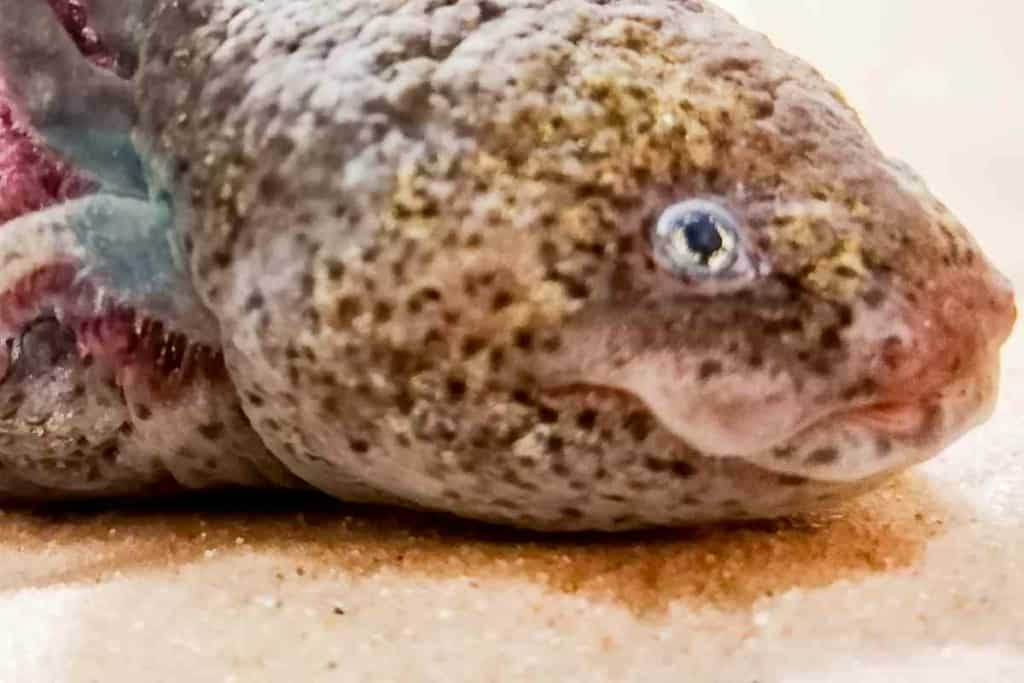Axolotl Color Morphing: 9 Reasons Your Axolotl Changed Colors
Axolotls are one of the most exquisite creatures to exist, possessing the ability to transform into different colors. However, most often ask what does it mean when an axolotl morphs?

Why Did My Axolotl Change Color?
There are many reasons why an axolotl morphs into a different color. The most common reasons are to camouflage themselves from predators, communicate with other axolotls, and during spring and fall seasons for the sake of attracting mates.
There are multiple reasons and factors that must be kept in account when determining why an axolotl changes colors.
Here we go further in detail and break down each of these factors to help you get a better insight into the matter and understand what may be causing your axolotl to morph.
What Does Axolotl Morphing Mean?
Morphing, in general, is defined as “the process of transformation from one physical form to another.”
When it comes to axolotls, morphing usually refers to the sudden change in coloration that they are capable of.
Generally speaking, there are three different types of color changes or morphs that axolotls can undergo:
- Leucistic – When an axolotl lacks pigment throughout its entire body resulting in a white or very light-colored axolotl.
- Albino – When an axolotl has a lack of melanin specifically which gives them their unique pink eyes.
- Melanoid – The result of an overproduction of melanin, giving the axolotl a very dark coloration.

While these are the three most common types of morphs, it is important to note that there are many other variations of color changes that have been documented in axolotls. These include, but are not limited to:
- Piebald: An axolotl with spots or patches of skin that lack pigment.
- Golden albino: A variation of the albino morph that has yellow pigmentation instead of pink eyes.
- GFP: A green fluorescent protein that makes the axolotl appear green when exposed to blue light.
- Axanthic: The complete absence of yellow and red pigments resulting in a gray or black axolotl.
While the morphs listed above are the most commonly documented, it is important to remember that there is a nearly endless variety of coloration changes that axolotls are capable of undergoing.
The sudden change in coloration is usually not something to be worried about, as it is a relatively common occurrence in axolotls.
However, if you notice that your axolotl is changing colors more frequently than usual or losing pigment in patches, it is important to consult with a veterinarian, as this could be an indication of a life-threatening health problem in your axolotl.
How Do Axolotls Morph?
Axolotls are known and adored for their ability to change their coloration as a means of camouflage or communication.
They are able to do this by manipulating the amount of pigment in their skin which is made up of two main types of cells: chromatophores and melanophores.
Chromatophores are responsible for producing yellow, orange, red, and brown pigments, while melanophores produce black and gray pigments.
By controlling the amount of pigment in their skin, axolotls are able to change their coloration to better match their surroundings or send signals to other axolotls.
It is important to note that the color changes that axolotls undergo are usually not permanent and will eventually revert back to their original coloration.
What Factors Cause Axolotls to Morph?

Protection:
As mentioned earlier, one of the most common reasons for color change is camouflage – the aim is to guard themselves against predators around.
If an axolotl feels like it is being threatened by a predator or is in an area with little food, it may change its coloration to better blend in with its surroundings.
This helps to keep the axolotl hidden from predators and increases its chances of survival. In addition to camouflage, color change can also be used as a form of communication.
For example, if an axolotl is feeling threatened, it may darken its coloration to appear more intimidating.
Mating:
Another common reason for color change is mating. Male axolotls will usually darken their coloration when they are ready to mate in order to attract a female.
Females will also sometimes change their coloration when they are ready to mate. This helps the axolotls to find potential mates and increases the chances of reproduction.
Stress:
In some cases, color change can be a sign of stress or illness in axolotls. If an axolotl is feeling stressed or sick, it may lose pigment in patches or change its coloration more frequently than usual.
If you notice your axolotl changing colors more frequently than normal or losing pigment in patches, it is important to consult with a veterinarian, as this could be an indication of a health problem.
Change in Hormones:
Hormonal changes can also cause axolotls to change color. For example, if an axolotl is pregnant, it may darken its coloration in order to better camouflage itself and its eggs.
High Levels of Iodine:
Exposure to high levels of iodine can also cause axolotls to change color. Iodine is a common ingredient in many disinfectants and medications, so it is important to be careful when using these around your axolotl.
If your axolotl comes in contact with iodine, it may lose pigment or change its coloration.
Temperature:
Axolotls are capable of changing their coloration in response to changes in temperature. For example, if an axolotl is exposed to cold temperatures, it may darken its coloration to absorb more heat.
On the other hand, if an axolotl is exposed to warm temperatures, it may lighten its coloration to stay cool.
Light:
Axolotls are also capable of changing their coloration in response to changes in light intensity. If an axolotl is exposed to bright light, it may darken its coloration to protect its eyes from the glare.
Conversely, if an axolotl is exposed to dim light, it may lighten its coloration to help it see better.
Age:
Age can also play a role in an axolotl’s ability to change colors. As axolotls get older, they generally become less capable of changing their coloration.
This is because the cells responsible for producing pigment (chromatophores and melanophores) tend to break down with age.
Disease:
Finally, infections and diseases can also cause an axolotl to morph. If an axolotl is sick, it may change its coloration as a way of indicating that it is not feeling well. For example, if an axolotl has a skin infection, it may lose pigment in patches as the infection spreads.
While there are a number of different factors that can cause an axolotl to morph, it is important to note that not all color changes are indicative of a problem.
In many cases, an axolotl will change its coloration simply in response to its environment or as a way of communicating with other axolotls.
If you notice that your axolotl is changing colors, it is important to observe its behavior and try to determine what may be causing the change.
If you are concerned that your axolotl may be sick or under stress, it is always best to consult with a qualified veterinarian.

What Are Some Warning Signs To Look Out For?
When it comes to morphing, most of the time, the process is a normal occurrence and doesn’t indicate anything wrong.
However, in some rare cases change in color can indicate an underlying issue. Some warning signs you must keep an eye out for include the following:
- If your axolotl is losing pigment in patches, this could be a sign of stress or illness.
- If your axolotl is changing colors more frequently than normal, this could also be an indication of a problem.
- Other warning signs to look out for include changes in appetite, lethargy, and changes in bathroom habits.
If you notice any of these warning signs, it is important to consult with a qualified veterinarian as soon as possible.
How Can I Prevent My Axolotl from Morphing?
There are a few things that you can do to help prevent your axolotl from morphing. First, it is important to provide your axolotl with a well-balanced diet and plenty of clean water.
Next, it is essential you try your level best to maintain a consistent temperature in your axolotl’s tank.
It would also be useful to provide your axolotl with hiding places and places to explore in its tank.
Since axolotls are highly sensitive creatures, make it a habit to avoid using products that contain iodine or harsh chemicals around your axolotl.
Last but not least, you should make sure to handle your axolotl gently and avoid putting it under any unnecessary stress
Key Takeaways
- Morphing is a perfectly natural occurrence in axolotls and usually isn’t indicative of any underlying health issues.
- However, in some rare cases, it can be a sign of stress or illness.
- Axolotls usually morph twice a year during spring and fall, mostly because of the change in seasons.
- If you notice your axolotl is morphing more than usual or appears to be sickly, it is always best to consult with a qualified veterinarian.
